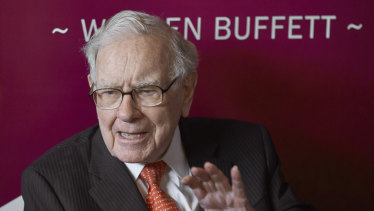Understanding the art of the corporate turnaround
Much has been written about the great value rotation in the past few weeks. To be fair despite many predicting the premature death of value investing it was probably a matter of when, not if, the market would switch to growth opportunities given the extent growth has outperformed value since the GFC and the valuation extremes seen in respective baskets in mid-October.
Several US investment banks were banging the value drum pre-US election. The conditions ripe with the US 10 year treasury yields marching towards 1 per cent and the outlook for economic growth post pandemic looking rosy into 2021 with the low-base effect. To date those that advocated the switch are on the right side of it, the question remains around the duration.

Seasonally, this is a time when losers tend to outperform as well. One well known technical strategist refers to this phenomenon as Robin Hood. Sell your winners, and cover stocks in which they are underweight among the losers. Whether it is a cyclical rotation, a mean reversion between value and growth stocks, or a seasonal trend, the jury is out as to how it ends.
A famous or infamous index
As an Australian small cap manager, the concept of a value stock is quite a conundrum. By their very nature stocks that make up the Small Ordinaries Index are typically emerging businesses, earlier in their maturity and stages of growth. Small cap investors have been rewarded for identifying potential future market leaders that are exposed to structural growth trends. If at some point in its life-cycle, management gets the strategy right and earnings follow, small caps become mid-caps and eventually large caps. On the contrary the small caps index is also the place where former market darlings come crashing back to reality. On most occasions, growth stalls, end markets mature, and the stars fade.
A good investment manager can decipher between those management teams who are inherently quality but have made a misstep. A challenged investment manager may be lulled into a poor-quality business on the optics that it is cheap. Deciphering a genuine mistake vs the beginning of the end, is an art form but is it what makes a good value investor?
It probably comes down to how you define value. One of the founding fathers of value Benjamin Graham is credited with the Benjamin method, which Warren Buffet has referenced as one his guiding lights. At its core Graham points to thorough analysis, safety of principal capital and adequate return. A growth manager may argue those principles are not just tools in a value manager’s wheelhouse and every manager regardless of style, should adopt a similar approach. Rather than pontificate on what is value and how it works, the quantitative experts at UBS have back tested value factors over the past 20yrs, with some interesting results.

But does value really work in small caps? In short yes, but it all depends on which factor you use. Unsurprisingly trailing 12-month price momentum is the best performing factor, but one which is fraught with volatility. Once the losers have been trawled over and bid up, the market will wait with bated breath as to whether consensus earnings estimates can be met. So with price to earnings ratios, if the “e” was overstated, the “p/e” may also appear artificially depressed. UBS’s Quant team flags trailing free cash flow yield as the most sustainable value factor that will look after you year in, year out. Interestingly when examining some of the more traditional value metrics – both forward and trailing earnings yield (the inverse of the P/E ratio), as well as when combined with trailing book yield have delivered uninspiring returns over the last 20 years.
Probably most telling from the analysis from the UBS Quant team is that momentum as a factor (Last 12 month returns), has outperformed an equal weighted benchmark by a factor of 8.
In a risk-rally, you will see value and high beta names (those stocks prone to volatility) outperform. A quick scan of the winners in the last six weeks, clearly articulates this point. But notably, the “Value + Beta” chart profiles for the most part are quite choppy over longer duration, as risk-rallies tend to come to an abrupt end. The UBS Quant team point to combining “Value + Quality” as the strategy for duration, whereby cumulative returns are less volatile and outperform their “Beta + Value” counterparts.
Value + quality = turnaround
It is easy to buy a business with momentum. Everyone likes a stock going up. But small cap managers have made their names on backing a turnaround and buying early. A turnaround usually follows these steps.
A former market darling missteps and is punished severely by investors as future growth expectations are reset, and a multiple that was once justified for the ‘quality of management, the track record of execution, the expectation of earnings upgrades’ is promptly bought back to earth.
The register usually full of like investors turns over, as the dreams can no longer be realised and what’s left is what some investors may characterise as a value opportunity while for others its banished to the archives never to be invested in again.
To even consider backing a turnaround, you need an open mind. If you were like the many investors caught up on the falls of Slater & Gordon, Speedcast or Vocation, I could go on, I liken it to a relationship breakdown. When you have been burnt by a former love, it is incredibly hard to go back to see if they have actually changed.
As alluded to above the market cannot help but buy 12-month underperformers when searching for value in their universe. Not surprisingly a future turnaround would start in this camp after its fall. There will be those who advocate it’s cheap, while there will be those who refuse to entertain the thought.
Getting over the hatred barrier is hard but normally the catalyst is change. Board renewal, new management, the kitchen sink – significant write downs, restructuring charges, a new PowerPoint presentation and finally a strategy day. If any of these things are remotely engaging it can warrant a second look.
I asked my team which companies they would regard as the greatest turnarounds. We came up with following list: Cleanaway, Vocus, Elders, Lynas Corporation, Navigator (post GFC), Accent Group and failed IPO Temple & Webster. At the top of the list would be Cleanaway.
Heart on sleeve (reputation on pocket)
I recall a trip to Brisbane in 2015 with the team. We like so many other small cap investors were there to see the darlings of the day – Mantra, G8 Education and future F1 race car tech play PWR. On our back up list was Transpacific. We had lost track whether their HQ was in Brisbane or in Melbourne. A sleepy industrial, that acquired the former Brambles waste management business at the peak in 2007 from its relatively brief stint owned by private equity, had almost collapsed during the GFC under a debt burden of around $2.1 billion. The market had disengaged with the lack of strategic direction, despite management’s attempts to simplify the business with the divestment of the commercial vehicle, and its New Zealand waste businesses a few years earlier.
In July of that year, the company appointed a new chief executive, Vik Bansal – a relative unknown to listed corporate life hailing from the US where he had successfully orchestrated the turnaround of NYSE listed Valmont Industries. Very rarely do you see a complete CV attached to an ASX release, it certainly piqued our curiosity that this leader was going to be about full disclosure.

A year later we started to see the beginning of what this turnaround would entail. Revenue and earnings before interest, tax, depreciation and amortisation growth for the first time in three years was re-emerging for Australia’s largest waste management company. A name change to Cleanaway Waste Management, a unified brand, a more consistent approach to customer service, cost out, improving capital discipline was just the start.
The Cleanaway of old, had at times been financially irresponsible, was over geared, had chased market share and ultimately did not behave like an industry leader. Upon Bansal’s arrival, he made it clear he needed to get his own house in order first and better control the capital spending. What began as a cost out strategy, migrated to reducing churn/driving revenue growth and operating leverage, while at the same time Bansal articulated the medium to long term strategy positioning Cleanaway in the virtual circle of waste. Once the market got comfortable that earnings growth could be delivered, Bansal was given the endorsement to acquire.
It’s not a straight line
Turnarounds are never usually smooth sailing, typically they take longer, cost more and require a significant amount of patience. Investors will engage early with a charismatic CEO and an impressive Venn diagram that can articulate TAM (total addressable market), but if the earnings trajectory fails to turn fast enough, the stock can fall afoul of the market. Several management teams have started well but underestimated the magnitude of the challenge to turn the Queen Mary and bring the investors along for the ride. In some cases, the problem is not the management team or operating model, it is a business which has been superseded by newer technology or disrupted by a challenger with a better mouse trap.
Flexigroup has had a few false starts as has Fletcher Building, Myer and Invocare. Several turnarounds have started promising such a Emeco, Noni B, Helloworld, but succumbed to structural headwinds, commodity cycles or pandemics.
Some are underway. The Reject Shop is embarking on at least its third turnaround, BWX under David Fenlon’s stewardship is expanding distribution, improving margin and driving dollars per kilo. Blackmores is also early stage and one to not lose sight of is Whitehaven, albeit not a turnaround per se, it is staging its third comeback.
When a business has been built through acquisition and been subject to multiple management iterations in its lifetime, it takes time to unwind, unpack and decipher the assets with true value, and realise the earnings potential.

From darling to detested
It was easy to see why the market fell in love with Vocus in the early days. A charismatic founder CEO. A sector where an oligopoly had reigned, but at the time was struggling to keep up with the changing needs of the customer. A challenger brand emerged with a customer centric, service focus and there was an opportunity to consolidate the space, get scale and take market share from the incumbents.
In the early days, the market liked the acquisitions, in many cases debt funded with significant accretion and synergies. With its acquisition of Amcom in mid-2015, with this multiple data centres, a New Zealand presence in FX Networks, Vocus was on a roll. However, the merger with M2, that saw Vocus enter the consumer broadband space, was the ultimate turning point for the stock. Burdened with debt and the structural change that was occurring in the consumer market (NBN rollout) saw organic growth vanish. Key management departed and the equity value fell to an five-year low of $2.22 in early 2018.
In the turnaround playbook, board renewal begins and new management is appointed. The market is undoubtedly curious as to the candidate, but many fallen angels are brushed aside for some time as focus shifts to the next shiny company with momentum. After months of speculation a Scotsman with vast experience at the major Australian telcos was drafted in to lead the charge in repairing Vocus. At Vocus’s full-year 2018 result there was no big strategy deck, the message was simple ‘Vocus’s primary focus going forward is sustainable, profitable growth’. When you have one of the best fibre network infrastructure assets in the country and its significantly under-utilised, fixing distribution to drive revenue was key.
As often is the case when a market darling falls, vultures circle to see what can be salvaged. There were two corporate approaches to take Vocus private that both fell through and the market began to question what they had seen during due diligence.
To his credit new boss Kevin Russell has stuck to script. Right-sizing the executive team, fixing the accounts, demonstrating the quality of the core network services business and its ability to grow, and emphasising to the market the opportunity that lies ahead.
Two and a bit years into the process, the turnaround is close to the final quarter. Sales have improved in the core network services business, enterprise, government and wholesale are re-engaged, the New Zealand business is up for sale and there are green shoots emerging within the consumer division. To the board and management’s credit an emergency capital raising was never undertaken during the pandemic and the quality of the cashflows have meant excessive leverage is now also no longer an issue. For investors that joined the register at a similar time to Russell’s appointment, a circa 22 per cent annualised return over the past two-and-a-half years is very impressive.
Boiling it down why this turnaround has been successful in a relatively short time frame is that Vocus, at its heart, has a very good product in the network services division and operates in a good industry structure. It was a challenger with a strategic plan to take market share from the incumbents. Having the right leader is just one of the ingredients, a strong and clear vision is ultimately required for success.
What does success look like?
The success of a turnaround is hard to quantify. Total shareholder return is a crude metric of success, but more tangible improvements include better transparency, predictability of earnings, confidence in financial accounts and a track record of delivery over multiple periods. In the case of Vocus it is still underway, but success is evident. For Cleanaway and Elders the proof is probably in the shareholder return metrics. It is easy to see why investors engage as most fund managers would characterise themselves as optimists, and hence hope that good businesses can be saved. At its core, people like to back the underdog.
As for where to now for value, I think it comes down to your view on the macro outlook. The rotation has been sharp, losers have been bought, and the relativity versus growth is nowhere near as extreme as it once was. Investors will continue to debate whether Netflix kill cinemas, Tesla kills the internal combustion engine or social media kills traditional media. It will not be an overnight phenomenon, and there will be opportunities for investors to make money through adopting traditional value disciplines when sorting the wheat from the chaff. The old way of doing something may not be the wrong way.
The COVID beneficiary darlings of 2020, could well be those discarded in 2021 as vaccines rule the world and we adopt some normality. Don’t lose sight of quality businesses that have mis-stepped or just struggle to match the success of previous years. A discounted valuation may present the perfect entry point to back the next turnaround.
Nick Guiera is an analyst at Eley Griffiths Group. The information in this piece is of a general nature only.
Business Briefing
Start the day with major stories, exclusive coverage and expert opinion from our leading business journalists delivered to your inbox. Sign up for the Herald‘s here and The Age‘s here.
Most Viewed in Business
Source: Thanks smh.com